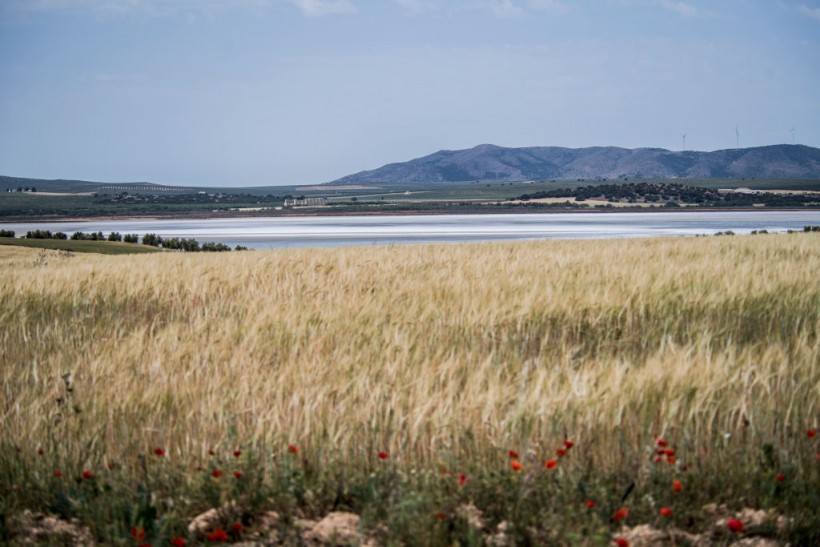Heat waves are extreme weather events that can have devastating impacts on human health, agriculture, and ecosystems.
They are also becoming more frequent and intense due to climate change. One of the effects of heat waves is that they alter the photosynthesis activity of plants, which is the process by which plants convert light energy into chemical energy and produce oxygen.
Photosynthesis is essential for the survival of plants and for the functioning of the global carbon cycle, which regulates the amount of carbon dioxide in the atmosphere.
However, measuring how heat waves affect photosynthesis at large scales is challenging, as it requires continuous and high-resolution observations of plant activity across different regions and times of the day.
Fortunately, recent advances in satellite technology have enabled researchers to monitor photosynthesis from space, using sensors that measure the fluorescence emitted by plants when they absorb light.
Fluorescence is a proxy for photosynthesis, as it indicates how much light energy is used for biochemical reactions and how much is dissipated as heat.
Satellite data reveal large-scale shift in photosynthesis activity
 (Photo : Carlos Gil/Getty Images)
(Photo : Carlos Gil/Getty Images)

The study was conducted by a team of researchers from South Korea, Germany, and the United States. They analyzed data from two new-generation geostationary satellites: the Geostationary Environment Monitoring Spectrometer (GEMS) and the Geostationary Operational Environmental Satellite-16 (GOES-16).
These satellites provide continuous and high-resolution observations of fluorescence over Asia and North America, respectively.
The researchers focused on two periods of drought and heat wave that occurred in 2020: one in July over East Asia and one in August over North America.
They compared the diurnal patterns of fluorescence (i.e., how fluorescence changes throughout the day) between normal and drought conditions, and between wet and dry regions.
They also used meteorological data to account for other factors that could influence photosynthesis, such as temperature, humidity, radiation, and soil moisture.
The results showed that during drought conditions, plants in dry regions increased their fluorescence (and thus their photosynthesis) in the morning hours, while plants in wet regions did not show any significant change.
This suggests that plants in dry regions take advantage of the cooler and moister conditions in the morning to maximize their CO2 uptake and water use efficiency.
However, in the mid-day and afternoon hours, plants in both dry and wet regions decreased their fluorescence (and thus their photosynthesis) during drought conditions, compared to normal conditions.
This indicates that plants reduce their photosynthesis to avoid excessive water loss and heat stress when the environmental conditions become unfavorable.
The researchers estimated that the net effect of these diurnal shifts in photosynthesis was a reduction of 9% in daily carbon uptake during drought conditions over East Asia, and a reduction of 12% over North America.
These reductions are comparable to those observed during previous severe droughts, such as the 2012 drought in North America.
Also Read: Plants May Be Able to See, Scientists Discover
Implications for plant adaptation, ecosystem functioning, and climate feedbacks
The study provides novel insights into how plants cope with drought and heat stress at large scales and across different regions.
The findings suggest that plants have different strategies to optimize their photosynthesis depending on their water availability and their exposure to heat waves.
Plants in dry regions increase their photosynthesis in the morning to take advantage of favorable conditions, while plants in wet regions do not need to adjust their photosynthesis as much.
However, both types of plants reduce their photosynthesis in the mid-day and afternoon to avoid excessive water loss and heat stress.
These strategies have implications for plant adaptation, ecosystem functioning, and climate feedbacks.
For plant adaptation, the study suggests that plants may have different levels of tolerance and resilience to drought and heat stress depending on their water availability.
Plants in dry regions may be more adapted to cope with short-term droughts but may be more vulnerable to long-term droughts that deplete their soil moisture reserves.
Plants in wet regions may be less adapted to cope with short-term droughts but may be more resilient to long-term droughts that do not affect their soil moisture as much.
For ecosystem functioning, the study implies that droughts and heat waves can have significant impacts on the carbon cycle by reducing the carbon uptake of plants.
This can affect the productivity and diversity of ecosystems, as well as their services such as food production, water regulation, and biodiversity conservation.
The study also highlights the importance of considering the diurnal patterns of photosynthesis, as they can reveal how plants respond to environmental changes throughout the day.
For climate feedbacks, the study indicates that droughts and heat waves can have positive feedbacks on global warming by decreasing the carbon sink of plants and increasing the carbon source of the atmosphere.
This can amplify the greenhouse effect and lead to more frequent and intense heat waves in the future.
The study also suggests that droughts and heat waves can have negative feedbacks on local warming by reducing the evapotranspiration of plants and increasing the albedo of the land surface. This can cool the air and moderate the heat wave effects.
Related article: Salt-Loving Super Plants: Saviors of the Planet?
© 2024 NatureWorldNews.com All rights reserved. Do not reproduce without permission.

![Tsunami Hazard Zones: New US Map Shows Places at Risk of Flooding and Tsunamis Amid Rising Sea Levels [NOAA]](https://1471793142.rsc.cdn77.org/data/thumbs/full/70325/280/157/50/40/tsunami-hazard-zones-new-us-map-shows-places-at-risk-of-flooding-and-tsunamis-amid-rising-sea-levels-noaa.jpg)



